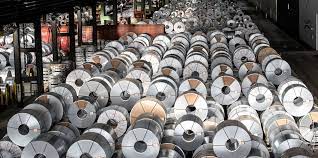The European Commission said Oct. 4 that it had approved under EU state aid rules a Eur1 billion ($997 million) funding measure to sustain Germany-based steelmaker Salzgitter’s efforts to decarbonize its steel production using hydrogen.
As reported in a separate release by Salzgitter Oct. 4, the approval will secure financing for the first development stage of the company’s Salcos program, to be implemented by the end of 2025. Salcos aims, in three stages between now and 2033, to switch steelmaking in Salzgitter entirely to low-CO2 crude steel production, replacing fossil fuels such as iron ore.
Platts assessed 62% Fe Iron Ore Index at $95.50/dmt CFR North China Oct. 4, down 20.1% since the start of 2022. The 62% Fe Iron Ore Index was at $95.50/dmt CFR North China Oct. 4, up 20 cents/dmt from Oct. 3, according to Platts assessment. Platts is part of S&P Global Commodity Insights.
Salzgitter’s current annual CO2 emissions of around 8 million mt are expected to be reduced by as much as 95% when the new production systems are fully in place.
The EC aid, which will take the form of a direct grant, will be used to replace one blast furnace at the company’s site in Salzgitter, Lower Saxony, with a direct reduction plant and electric arc furnace producing 1.9 million mt/year of green steel. The measure will also be used to build a 100 MW electrolyzer, which will produce around 9,000 mt of renewable hydrogen per year that will be used as feedstock in the direct reduction plant.
The electrolyzer, the direct reduction plant and the electric arc furnace are expected to start operating in 2026.
“This will contribute to the greening of a very energy-intensive and hard-to-abate sector while reducing Germany’s dependence on imported fossil fuels,” EC Executive Vice President Margrethe Vestager, in charge of competition policy, said. “This is a good example of how our state aid framework enables member states to help the EU’s energy-intensive sectors tackle the challenges of greening.”
— Annalisa Villa






